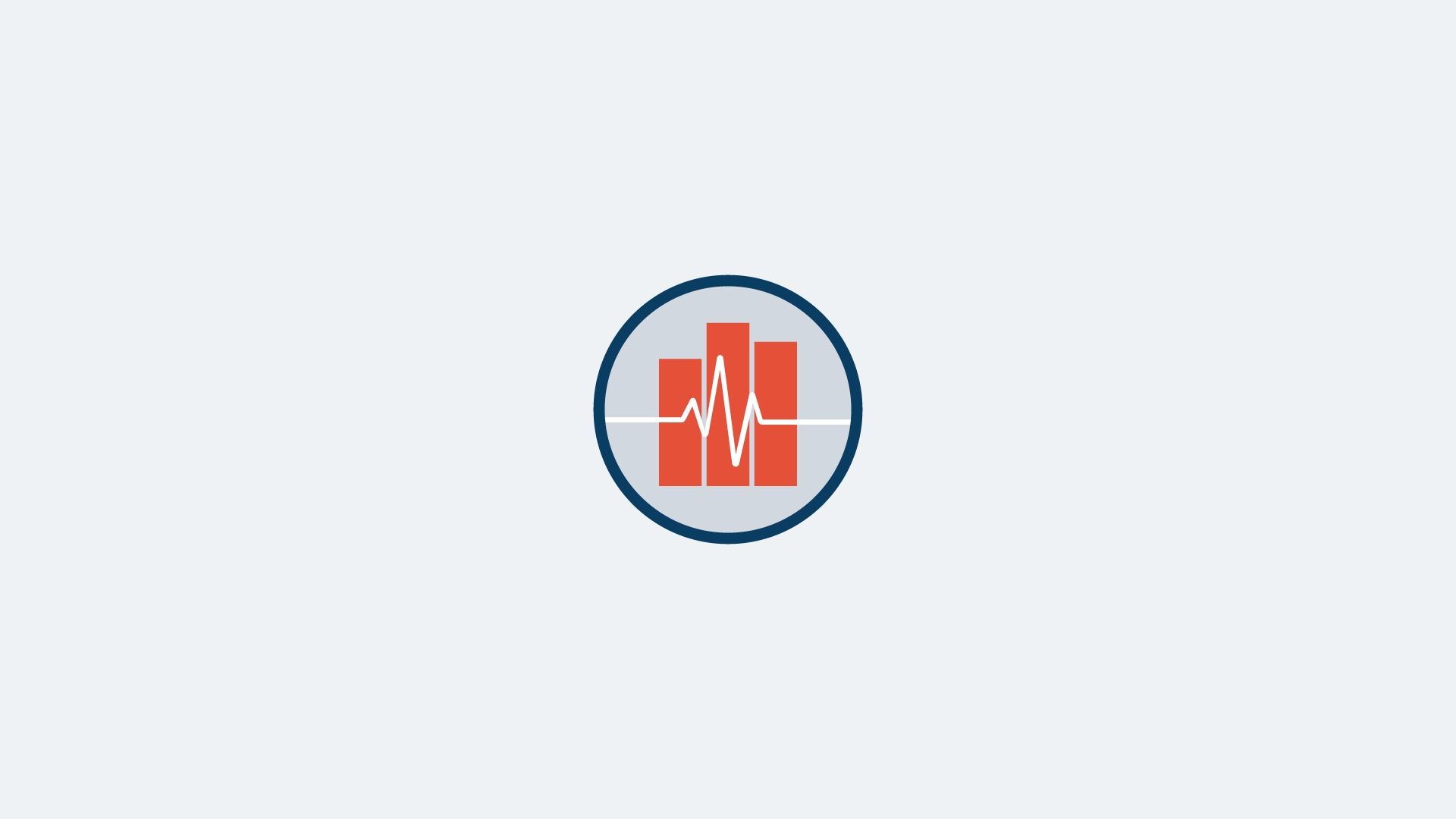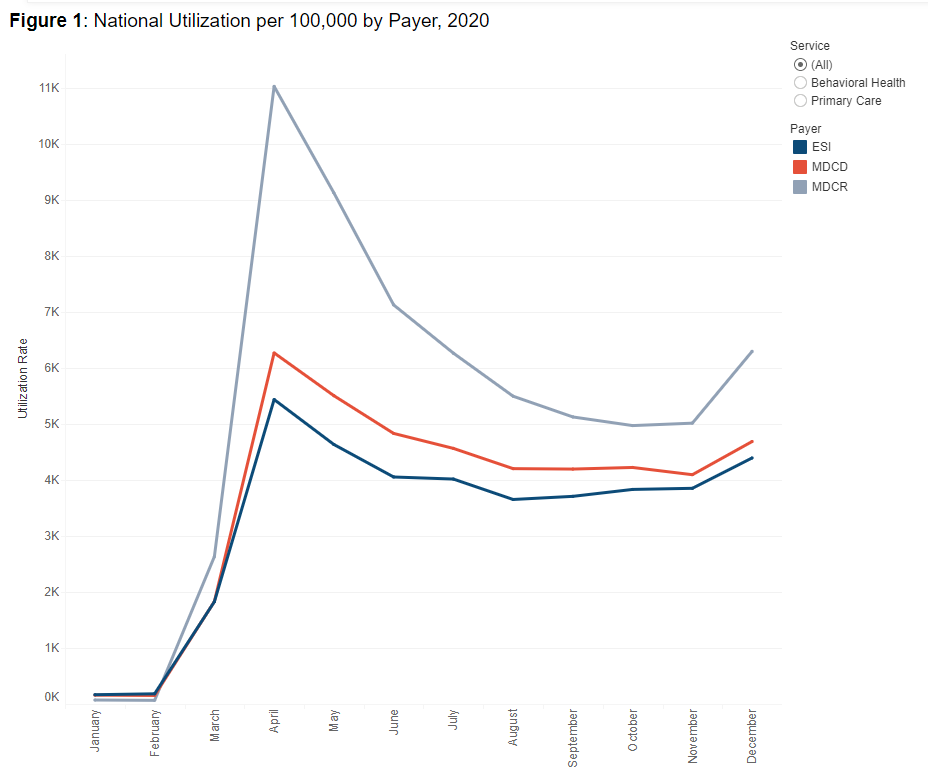HCCI Reports
-
Seasonal Trends in Antibiotic Use were Disrupted by COVID-19
 Read more: Seasonal Trends in Antibiotic Use were Disrupted by COVID-19
Read more: Seasonal Trends in Antibiotic Use were Disrupted by COVID-19November and December of 2022 saw growth in rates of flu, RSV, and COVID, that renewed attention to a seasonal trend of increased respiratory illnesses in the winter months. Data from Medicare, Medicaid, and private insurance illustrate the seasonal ups and downs of respiratory infections. Earlier HCCI research showed that hospitalizations from respiratory illness increased…
-
HCCI Data Brief: Sexual and Reproductive Health Among People with Employer-Sponsored Insurance
Read more: HCCI Data Brief: Sexual and Reproductive Health Among People with Employer-Sponsored InsuranceReproductive and sexual health services play an important role in daily life and wellbeing for many people. These services include preventive services (such as screenings for sexually transmitted infections and reproductive cancers), contraceptive services, and services relating to pregnancy and childbirth. The objective of this report is to provide national and state data on the use…
-
Going Beyond the Healthy Marketplace Index: A Closer Look at Four Metro Areas
Tags: HMI Read more: Going Beyond the Healthy Marketplace Index: A Closer Look at Four Metro Areas
Read more: Going Beyond the Healthy Marketplace Index: A Closer Look at Four Metro AreasEach year, HCCI creates the Healthy Marketplace Index (HMI) to examine how health care spending varies across the United States. The HMI shows health care spending, prices, and use compared to the national median for close to 200 local metro areas. By describing how health care spending varies geographically and how use and price contribute…
-
HCCI Data Byte: Using 5-Digit Enrollee and Hospital Zip Code Data to Examine Travel Times for Children’s Hospital Services
 Read more: HCCI Data Byte: Using 5-Digit Enrollee and Hospital Zip Code Data to Examine Travel Times for Children’s Hospital Services
Read more: HCCI Data Byte: Using 5-Digit Enrollee and Hospital Zip Code Data to Examine Travel Times for Children’s Hospital ServicesHCCI’s commercial claims dataset includes claims for over one-third of the population with health insurance through their job (employer-sponsored insurance, or ESI). There are a number of unique features of these data that make them valuable for answering important health care and health policy questions. One such feature is the 5-digit zip codes of ESI…
-
Trends in STI Screening Utilization
 Read more: Trends in STI Screening Utilization
Read more: Trends in STI Screening UtilizationSexually transmitted infections (STIs) are infections caused by pathogens spread through sexual contact. STIs can progress from an infection into a sexually transmitted disease (STD). Chlamydia, gonorrhea, syphilis and HIV are the most commonly screened for STIs in the US. The CDC STD Surveillance Data estimates that there were more than 2.5 million cases of chlamydia,…
-
ESI Enrollees Paid $853 on Average Out-of-Pocket for Health Care in 2020, But Some People Paid Over Four Times as Much
 Read more: ESI Enrollees Paid $853 on Average Out-of-Pocket for Health Care in 2020, But Some People Paid Over Four Times as Much
Read more: ESI Enrollees Paid $853 on Average Out-of-Pocket for Health Care in 2020, But Some People Paid Over Four Times as MuchHigh out-of-pocket costs for health care services can put necessary care and medications out of reach for many people. In one survey, nearly half of adults reported difficulty paying for health care services. In this brief, we used HCCI’s commercial claims dataset, which includes health care spending information for over one-third of the population who…
-
Growing Rate of Billed Emergency Department Use in Childbirth Inpatient Admissions
 Read more: Growing Rate of Billed Emergency Department Use in Childbirth Inpatient Admissions
Read more: Growing Rate of Billed Emergency Department Use in Childbirth Inpatient AdmissionsA recent KHN article reported on the growing presence of “obstetric emergency departments” (OBEDs) in U.S. hospitals. Hospitals suggest that OBEDs, which are generally located within labor and delivery departments and often indistinguishable from standard triage rooms, allow pregnant patients with potential emergent conditions (or when they are in labor) to be seen quickly by hospitalists….
-
Measuring the Prevalence of Obesity Using a Distributed Electronic Health Record Network
 Read more: Measuring the Prevalence of Obesity Using a Distributed Electronic Health Record Network
Read more: Measuring the Prevalence of Obesity Using a Distributed Electronic Health Record NetworkObesity is a serious and costly chronic disease that has been increasingly common among the U.S. population. Electronic health record (EHR) data have the potential to support research and patient care interventions. The timeliness and availability of aggregated clinical data can be used in near-real time to monitor obesity prevalence based on body mass index…
-
Telehealth Use Increased more than 50-fold for Primary Care Visits and Behavioral Health Services in Early Months of the COVID-19 Pandemic
 Read more: Telehealth Use Increased more than 50-fold for Primary Care Visits and Behavioral Health Services in Early Months of the COVID-19 Pandemic
Read more: Telehealth Use Increased more than 50-fold for Primary Care Visits and Behavioral Health Services in Early Months of the COVID-19 PandemicTelehealth facilitates medical care, allows for the sharing of health information, and offers patient health education through remote communication. In 2020, the onset of the public health emergency prompted many localities to restrict in-person gatherings to prevent transmission of the virus. Health care providers responded by expanding telehealth services in an effort to continue serving…
-
COVID-19 Hospitalizations in 2020 were Highest for People Living in the Most Socially Vulnerable Areas and American Indian and Alaska Native People
 Read more: COVID-19 Hospitalizations in 2020 were Highest for People Living in the Most Socially Vulnerable Areas and American Indian and Alaska Native People
Read more: COVID-19 Hospitalizations in 2020 were Highest for People Living in the Most Socially Vulnerable Areas and American Indian and Alaska Native PeopleThe onset of the COVID-19 pandemic fundamentally shifted health and health care in the US in 2020. Hospitals have been central to responding to the pandemic and treating COVID, which means that hospitalizations can provide an important lens to understanding the pandemic’s impact. Earlier HCCI research looked at hospital use and spending among people with…

